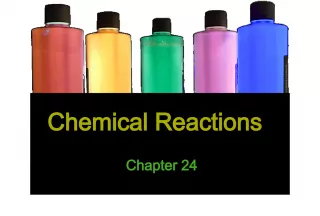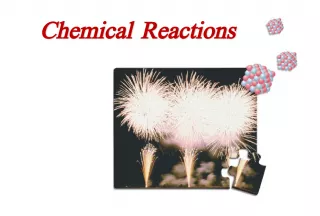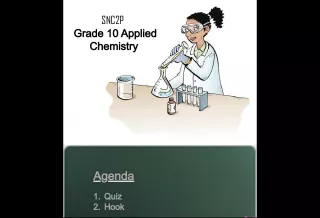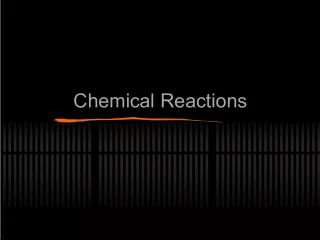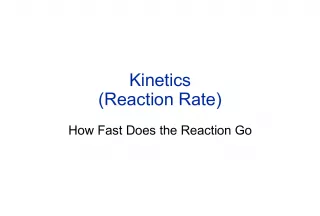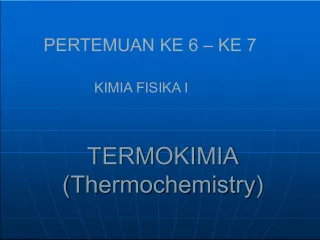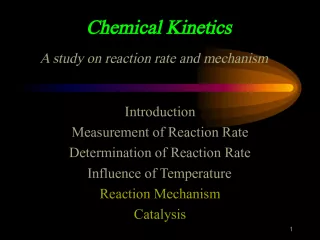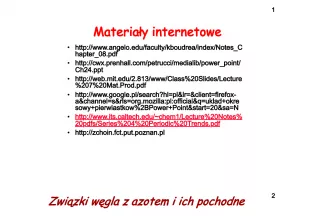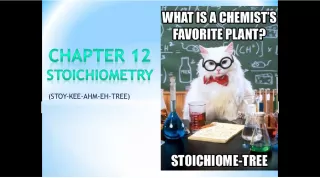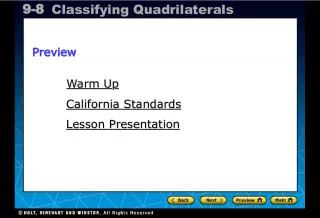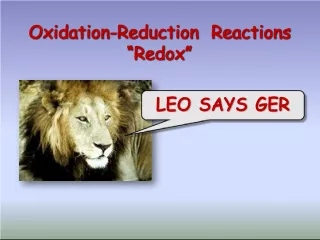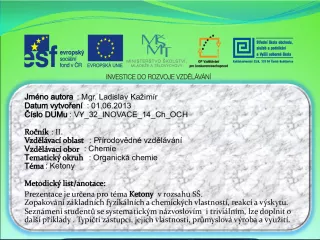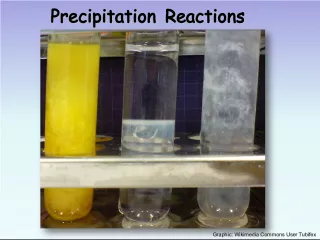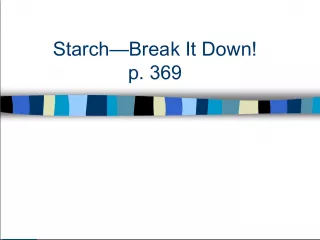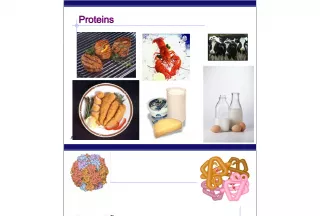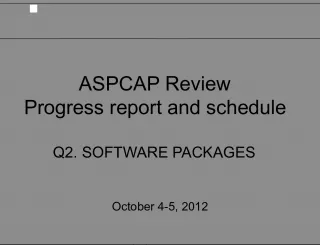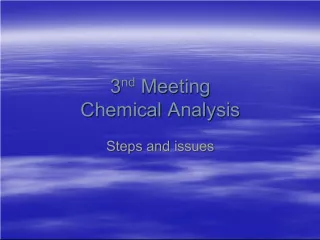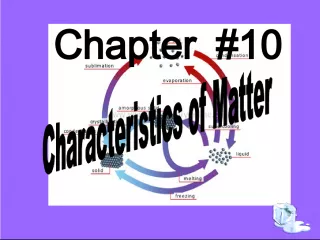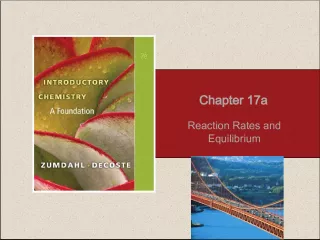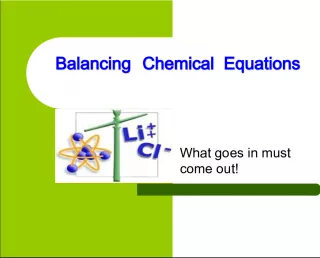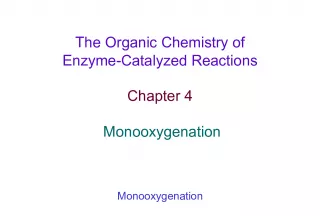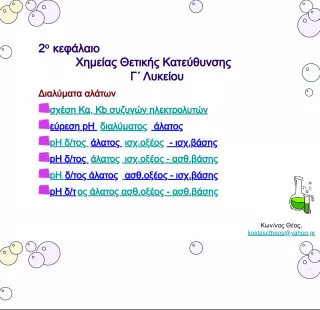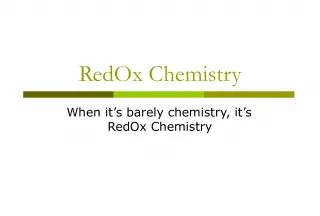Classifying Chemical Reactions


In Chapter 8, Section 3, the process of classifying chemical reactions is introduced. Understanding the reasons for classification can help in predicting the products that will form. Recognizing patterns among reactions can
- Uploaded on | 6 Views
-
 jorgetucker
jorgetucker
About Classifying Chemical Reactions
PowerPoint presentation about 'Classifying Chemical Reactions'. This presentation describes the topic on In Chapter 8, Section 3, the process of classifying chemical reactions is introduced. Understanding the reasons for classification can help in predicting the products that will form. Recognizing patterns among reactions can. The key topics included in this slideshow are . Download this presentation absolutely free.
Presentation Transcript
Slide1Notes: Ch 8-Section 3“ Classifying Chemical Reactions”
Slide2Classifying reactionsreasons for classification: • helps to predict what products will form • recognizing patterns can help when balancing equations 5 different types of reactions are introduced in chapter 8 • additional types exist • note--- some reactions can be classified as more than 1 type • note--- some reactions do not “fit” any type
Slide3Reaction Types: Combustion Reactions• (def)- the oxidation reaction of an organic compound in which heat is released • often used to generate energy ; occurs when a substance combines with oxygen releasing a large amount of energy in the form of heat and light
Slide4Many Combustible Compounds areH ydrocarbons • hydrocarbon (def)- a compound composed of only carbon and hydrogen • the combustion of gasoline produces energy used for transportation • example: burning of propane C 3 H 8 + 5O 2 3CO 2 + 4H 2 O
Slide5Combustion Reaction---General Pattern:hydrocarbon + oxygen carbon dioxide + water Figure 9 p. 276 The complete combustion of any hydrocarbon, such as methane, yields only carbon dioxide and water
Slide6Combustion Reactions (cont.)• some combustible compounds are not hydrocarbons • alcohols (compounds made of carbon , hydrogen and oxygen ) will also combust • example: combustion of ethanol CH 3 CH 2 OH + 3O 2 2CO 2 + 3H 2 O
Slide7Combustion Reactions (cont.)• if enough oxygen is not available , combustion reactions will be incomplete and carbon monoxide and unburned carbon (soot) will be produced along with the carbon dioxide and water
Slide8Reaction Types: Synthesis Reactions• (def)- a reaction in which 2 or more substances combine to form a new compound • “ synthesis” (from Greek) means “ to put together ” • general pattern: A + X AX A, X can be elements or compounds AX is a compound
Slide9Synthesis Reactions (cont.)• two elements will form a binary compound • examples: Na + Cl NaCl (binary ionic compound) C + O 2 CO 2 (binary molecular compound) Figure 10 p. 277 When the elements magnesium and oxygen react, they combine to form the binary compound magnesium oxide
Slide10Synthesis reactions (cont.)• compounds can form a ternary compound ( a compound composed of 2 or more elements) CaO (s) + H 2 O (l ) Ca(OH) 2 (s) • some oxides of non-metals can combine with water to produce acids CO 2 (g) + H 2 O(l) H 2 CO 3 ( aq ) (carbonic acid)
Slide11Reaction Types: Decomposition Reactions• (def)- a reaction in which a single compound breaks down to form two or more simpler substances • general pattern: AX A + X AX is a compound A, X can be elements or compounds • are the opposite of synthesis reactions • often need heat or electricity to proceed
Slide12Decomposition Reactions (cont.)• binary compounds usually decompose back into the 2 elements that compose them • example: decomposition of water 2H 2 O (l) electricity 2H 2 (g) + O 2 (g) Figure 11 p. 278 Nitrogen triiodide is a binary compound that decomposes into the elements nitrogen and iodine.
Slide13Decomposition Reactions (cont.)• compounds made up of 3 or more elements usually do not decompose back into those elements • example: decomposition of limestone ( CaCO 3 ) CaCO 3 (s) heat CaO (s) + CO 2 (g) • many synthesis reactions can be reversed to become decomposition reactions
Slide14Reaction Types: Displacement Reactions(Single Replacement Reactions) • (def)- a reaction that occurs when 1 element replaces a similar element in a compound • general pattern: A + BX AX + B (or) Y + BX BY + X A, B, Y and X are elements AX, BX and BY are compounds • commonly take place in aqueous solutions • usually require a smaller amount of energy than synthesis or decomposition reactions
Slide15Reactivity is Ranked byActivity Series • activity series (def)- a series of elements that have similar properties and that are arranged in descending order of chemical reactivity
Slide16Activity Series (cont.)• elements are arranged in order, with the most active ones on top (see Table 4 p. 281 and Appendix A p. 832) • in general, any element listed can displace those below it , but not above it • allows predictions about displacement reactions to be made
Slide17Figure 12 page 280Copper is the more active metal and displaces silver from the silver nitrate solution. So copper is higher on the activity series than silver is. The Cu 2+ formed gives the solution a blue color
Slide18Reaction Types: Double-DisplacementReactions ( Double Replacement Reactions ) • (def)- a reaction that occurs when the ions of 2 compounds exchange places in an aqueous solution to form 2 new compounds • general pattern: AX + BY AY + BX A, X, B and Y as reactants are ions AY and BX as products are compounds
Slide19Double-Displacement Reactions (cont.) • takes place in aqueous solution • one of the compounds produced is usually a precipitate , an insoluble gas or a molecular compound • the other compound is often soluble and remains in solution
Slide20Figure 13 page 283• example: the formation of solid lead(II) iodide from an aqueous solution of potassium iodide and lead(II) nitrate • equation: 2KI (aq) + Pb(NO 3 ) 2 (aq) PbI 2 (s) + 2KNO 3 (aq)
Slide21Figure 13 page 283
